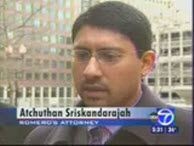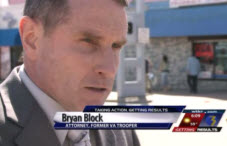
Maryland Disorderly Conduct Laws & MD Public Intoxication Defense | Law Offices Of SRIS, P.C.
As of December 2025, the following information applies. In Maryland, disorderly conduct involves disruptive public behavior, often encompassing public intoxication, disturbing the peace, or impeding traffic. Penalties can include fines and jail time. It’s not just a minor infraction; these charges can impact your record. The Law Offices Of SRIS, P.C. provides dedicated legal defense for these matters.
Confirmed by Law Offices Of SRIS, P.C.
Picture this: You’re out with friends, enjoying yourself, maybe a bit too loudly, or perhaps a disagreement gets a little heated in public. Next thing you know, you’re facing a disorderly conduct charge in Maryland. It can feel like your world just got turned upside down. Or maybe you were just trying to get home after a few drinks, and suddenly, you’re accused of violating Maryland public intoxication law. These situations are scary, confusing, and honestly, a bit intimidating. You’re probably wondering what this all means for your future, your record, and your peace of mind. That knot in your stomach? We get it. At Law Offices Of SRIS, P.C., we’ve seen countless individuals in similar spots, feeling anxious and uncertain about what comes next. Our goal isn’t just to represent you; it’s to bring you clarity and a path forward when things feel most muddled. We’re here to explain Maryland’s laws on disorderly conduct and public intoxication, dissect what a charge really means, and show you how a knowledgeable MD disorderly conduct lawyer can stand by your side. You don’t have to face this alone.
What is Disorderly Conduct in Maryland?
As of December 2025, the following information applies. Disorderly conduct in Maryland isn’t just one specific action; it’s a broad term covering various behaviors that disturb public peace and order. Maryland Code, Criminal Law § 10-201 outlines the core aspects. Generally, you could be charged if you:
- Act in a disorderly manner that disturbs the public peace. This might include loud arguments, shouting, or creating a scene in a public place.
- Wilfully obstruct the free passage of another person or vehicle. Think about blocking sidewalks or roads in a way that’s more than just a temporary inconvenience.
- Intentionally hinder or obstruct a law enforcement officer in the performance of their duties, without physical resistance. This isn’t about resisting arrest, but more about deliberate interference.
- Enter the land or premises of another, or a public agency, and wilfully act in a disorderly manner. This can apply even if you’re technically on private property but your actions are disturbing the public around you.
- Fail to obey a reasonable and lawful order to disperse given by a law enforcement officer, where two or more people are engaged in disorderly conduct in a public place.
It’s important to understand that the “disorderly manner” aspect often hinges on whether your actions genuinely disturb others. It’s not about merely being loud; it’s about crossing a line into disruptive, aggressive, or inciting behavior. Sometimes, it ties into Maryland public intoxication law, where being under the influence leads to public disturbances. The key is how your actions affect the community’s peace and safety. It’s a fine line, and often, law enforcement makes a judgment call in the moment. That’s why having someone who understands the nuances of these laws is so important.
Takeaway Summary: Maryland disorderly conduct laws target public actions that disrupt peace or safety, encompassing various behaviors from shouting to obstructing passage. (Confirmed by Law Offices Of SRIS, P.C.)
How to Effectively Address a Disorderly Conduct Charge in Maryland?
Getting hit with a disorderly conduct charge can feel overwhelming. It might seem minor, but it can absolutely stick to your record and cause headaches down the line. So, what do you do if you find yourself in this tough spot? Here’s a practical guide on how to approach it:
- Keep Your Cool and Don’t Resist: We get it; emotions can run high. But resisting arrest or getting into a shouting match with law enforcement will only make things worse. Even if you believe with all your heart you’ve done nothing wrong, cooperate. Your goal right now is to de-escalate the immediate situation. The time for defending yourself comes later, with your legal advocate by your side. Remember, anything you do or say in that moment can be used against you. Don’t add fuel to the fire.
- Assert Your Right to an Attorney Immediately: This is absolutely critical. You have a constitutional right to remain silent and a right to legal counsel. Use them. Politely state, “I wish to speak with an attorney.” Do not try to explain your side, offer justifications, or make excuses. Even innocent statements can be twisted or misunderstood. Let your MD disorderly conduct lawyer speak for you.
- Gather Key Information (When Safe and Possible): Once things have settled, if you can safely do so without interfering with law enforcement, try to recall and note down details. What was the exact time and location? Can you remember the officer’s badge number or name? Were there any witnesses? Any small detail can be a puzzle piece for your defense. Don’t put yourself in further danger, but if you can discreetly observe, do so.
- Document the Scene (If Allowed): In today’s world, phones are powerful tools. If it’s legal and safe, and you are not obstructing officers, taking photos or videos of the scene can provide invaluable context. This could include the setting, the condition of the area, or anything that might support your account of events. Be mindful of local laws regarding recording and always prioritize your safety.
- Refrain from Discussing Your Case with Others: It’s tempting to vent to friends or post on social media. Resist the urge. What you say, even casually, can be used as evidence. Police can and do check social media. Keep the details of your arrest, your perspective, and any legal strategy strictly between you and your attorney. Trust us, it’s for your own good.
- Seek Knowledgeable Legal Counsel Promptly: This isn’t a parking ticket. A disorderly conduct charge in Maryland, especially if it involves Maryland public intoxication law, needs a professional defense. A seasoned MD disorderly conduct lawyer understands the specific statutes, the local court procedures, and how prosecutors typically handle these cases. They can review the evidence, identify weaknesses in the prosecution’s case, negotiate with the prosecutor, and represent you vigorously in court. Don’t delay; the sooner you get legal help, the better your chances of a favorable outcome. We can help you understand your options and develop a strong defense strategy.
Ignoring a disorderly conduct charge won’t make it disappear. Taking proactive steps, starting with securing experienced legal representation, is your best bet for protecting your rights and your future. We’re here to guide you through every step.
Can a Disorderly Conduct Charge Impact My Future Opportunities in Maryland?
Many people mistakenly believe that disorderly conduct is just a minor slap on the wrist, a small infraction that won’t really matter in the long run. Blunt Truth: That’s a dangerous misconception. While it might not carry the same weight as a felony, a misdemeanor conviction for disorderly conduct or public intoxication in Maryland can absolutely cast a long shadow over your future. This isn’t just about a fine; it’s about your record, your reputation, and your ability to pursue certain opportunities.
Think about it:
- Employment: Many employers conduct background checks. A criminal record, even for a misdemeanor, can be a red flag. It might make it harder to secure certain jobs, especially those requiring security clearances, professional licenses, or positions of trust. Imagine explaining a public intoxication conviction during a job interview. It’s a hurdle you don’t want.
- Housing: Landlords also often run background checks. A history of disorderly conduct could make it more difficult to rent an apartment or house, particularly in competitive markets. They might view it as a sign of potential tenant issues.
- Professional Licenses: If you’re pursuing or already hold a professional license (e.g., nursing, teaching, law, finance), a disorderly conduct conviction could jeopardize your ability to obtain or maintain that license. Licensing boards often require applicants to disclose any criminal history and can deny or revoke licenses based on certain convictions.
- Educational Opportunities: While less common for disorderly conduct than more serious crimes, some educational institutions, especially graduate programs, may inquire about criminal history. It could potentially impact scholarship eligibility or admission to certain fields.
- Social Stigma: Beyond the official record, there’s the social stigma. A public record of disorderly conduct can affect how others perceive you, whether it’s in your community or social circles. While unfair, these judgments can be real.
- Future Legal Issues: A prior conviction, even for a misdemeanor, can impact how future legal issues are perceived. If you’re ever charged with another offense, a prosecutor or judge might view your prior record as a pattern of behavior, potentially leading to harsher penalties.
We understand this can be a terrifying prospect. The fear of a permanent mark on your record is legitimate. That’s why taking these charges seriously and having an experienced MD disorderly conduct lawyer on your side isn’t just an option—it’s often a necessity. They can work to minimize the impact, challenge the charges, or explore options like expungement, which can help clear your record under certain circumstances. Don’t let a moment of bad judgment or a misunderstanding define your future.
Why Hire Law Offices Of SRIS, P.C. for Your Maryland Disorderly Conduct Defense?
When you’re facing a disorderly conduct charge or dealing with Maryland public intoxication law, you need more than just a lawyer; you need someone who truly understands the stakes and genuinely cares about your outcome. At Law Offices Of SRIS, P.C., we bring a blend of seasoned experience, direct communication, and a reassuring approach that helps our clients feel supported, not judged. We know you’re going through a tough time, and we’re here to provide the strength and clarity you need.
Mr. Sris, the founder and principal attorney, puts it plainly: “My focus since founding the firm in 1997 has always been directed towards personally handling the most challenging and complex criminal and family law matters our clients face.” This isn’t just a statement; it’s a philosophy that guides our entire team. We don’t shy away from difficult cases. Instead, we lean into them, applying a rigorous, detail-oriented approach to build the strongest possible defense for you. We understand the local Maryland courts, the prosecutors, and the nuances of the laws that impact your case. Our goal is always to protect your rights, your reputation, and your future, striving for the best possible resolution, whether that’s getting the charges dismissed, securing an acquittal, or negotiating a favorable plea agreement.
When you choose Law Offices Of SRIS, P.C., you’re not just getting legal representation; you’re gaining an ally who will fight tirelessly on your behalf. We’ll explain every step of the process in plain language, making sure you understand your options and what to expect. We’re direct, honest, and always have your best interests at heart. You can trust us to provide a confidential case review and craft a defense strategy tailored to your unique situation.
Law Offices Of SRIS, P.C. has a location conveniently situated in Rockville, Maryland, ready to serve your needs:
Rockville Location:
199 E. Montgomery Avenue, Suite 100, Room 211
Rockville, MD, 20850, US
Phone: +1-888-437-7747
Don’t let a disorderly conduct charge define your future. Call now to discuss your case and take the first step towards a confident defense. We’re here for you.
Frequently Asked Questions About Disorderly Conduct in Maryland
Q: What constitutes public intoxication under Maryland law?
Maryland law doesn’t have a specific “public intoxication” statute like some states. Instead, public drunkenness often falls under general disorderly conduct statutes if your intoxication leads to disruptive behavior, disturbing the peace, or endangering yourself or others in a public space. Being merely drunk isn’t enough; your actions while intoxicated are key.
Q: What are the typical penalties for disorderly conduct in Maryland?
In Maryland, disorderly conduct is typically a misdemeanor. Penalties can include fines up to $500 and/or imprisonment for up to 60 days. However, judges have discretion, and actual penalties can vary based on the specific circumstances, your criminal history, and the jurisdiction. The goal is often to minimize these harsh potential outcomes.
Q: Can a disorderly conduct charge in Maryland be expunged from my record?
Yes, under certain conditions, a disorderly conduct charge in Maryland can be expunged. This means it’s removed from public record. Eligibility depends on the outcome of your case (e.g., dismissal, not guilty verdict, probation before judgment) and the passage of a waiting period, typically three years after case completion. An attorney can guide you.
Q: Is disorderly conduct considered a misdemeanor or felony in Maryland?
Disorderly conduct in Maryland is consistently classified as a misdemeanor offense. It is not a felony. While it carries less severe penalties than a felony, it is still a criminal charge that can result in a criminal record, which can have significant repercussions on employment, housing, and other aspects of your life. Don’t take it lightly.
Q: What if I was just arguing loudly with a friend in public? Can that lead to a charge?
Yes, arguing loudly in public can potentially lead to a disorderly conduct charge if it genuinely disturbs the peace of others or incites a public disturbance. The key is whether your actions move beyond a private dispute into behavior that negatively impacts the public environment. Context and the reaction of those around you matter significantly.
Q: Can I be charged with disorderly conduct if I’m on private property?
Yes, you can be charged with disorderly conduct on private property if your actions disturb the public peace or property, or if you refuse to leave when asked by the owner or a public agency official. The law covers disorderly behavior that impacts the public, even if the physical location is privately owned, such as a shopping mall or restaurant. It’s about public effect.
Q: What kind of evidence is typically used against someone in a Maryland disorderly conduct case?
Evidence in a disorderly conduct case often includes witness testimony from law enforcement officers or private citizens, video recordings (like surveillance footage or phone videos), and sometimes audio recordings. Your own statements at the scene can also be used. An MD disorderly conduct lawyer will scrutinize all evidence for inconsistencies or legal challenges.
Q: How long does a disorderly conduct charge typically stay on my criminal record in Maryland?
If convicted, a disorderly conduct charge remains on your public criminal record indefinitely unless it is successfully expunged. If the case was dismissed or you received a “probation before judgment” (PBJ), you might be eligible for expungement much sooner. The record can impact background checks for various purposes. Legal guidance is essential here.
Q: Can a disorderly conduct charge affect my ability to get a job or secure housing in Maryland?
Absolutely. A disorderly conduct conviction, even a misdemeanor, can appear on background checks conducted by potential employers and landlords. This could make it more challenging to secure certain jobs, especially those requiring professional licenses or trust, or to find suitable housing, as it might be viewed as a risk factor. It’s a genuine concern.
Q: What’s the main difference between disturbing the peace and disorderly conduct in Maryland?
In Maryland, “disturbing the peace” is often considered a specific form or element of disorderly conduct rather than a separate charge. Disorderly conduct is a broader offense encompassing various disruptive behaviors, while disturbing the peace focuses explicitly on actions that interrupt the tranquility or public order. The statutes often overlap, and one can be included in the other.
The Law Offices Of SRIS, P.C. has locations in Virginia in Fairfax, Loudoun, Arlington, Shenandoah and Richmond. In Maryland, our location is in Rockville. In New York, we have a location in Buffalo. In New Jersey, we have a location in Tinton Falls.
Past results do not predict future outcomes.






